NSF Awards: 1934039
American Museum of Natural History in partnership with Project GUTS has launched a three-year project to design, implement and study a program that engages 125 NYC middle schoolers in a 3-week CT-integrated science summer institute.The curriculum aims to simultaneously engage youth with ecosystem dynamics and use CT practices in the context of computer modeling and simulations. The research focuses on documenting the impact of the intervention on students’ learning of CT and ecosystem concepts and developing a better understanding of what connections youth make between CT practices evident in coding/decoding and understanding of complex scientific processes. Working with evaluators at Education Design, self-efficacy is also being documented to detect shifts in their beliefs about modeling, computer modeling, and STEM learning.
The curriculum had a series of activities to introduce students to increasingly advanced CT processes in the context of Lyme disease and the NYC ecosystem. Many activities provided students with the opportunity to demonstrate mechanistic reasoning in conversation with their peers and instructors and in written reflections, and had many opportunities to engage in the “Use-Modify-Decode-Create” continuum. The goal was to address the key aspects of CT: Analysis, Abstraction, and Automation.
In this video we will describe what we have learned in the first year of implementation and the successes and challenges we have faced in teaching this program remotely. We also hope to launch discussions with you on key aspects of the project that have field-wide implications.



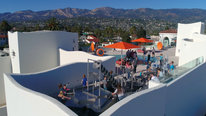
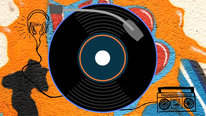
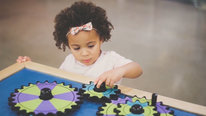
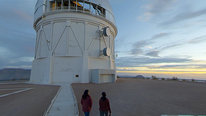
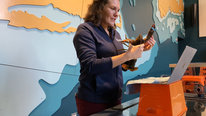
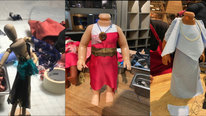
Kauser Jahan
A very interesting project.
Rosio Bugarin Pedroso
Gabrielle Rabinowitz
Preeti Gupta
Director of Youth Learning and Research
Thank you Kauser! We are so excited to share the details of this project. Feel free to ask us questions. Was there something particularly interesting?
Rosio Bugarin Pedroso
Preeti Gupta
Director of Youth Learning and Research
Hello everyone,
Our team is looking forward to having a dialogue with you and to hear your comments and questions. We are learning a lot about what it means to do this kind of research and implementation during a pandemic. We have finished recruiting the middle school youth for the second year of implementation and want to share what we are thinking in terms of modifications so we can better support learners to make the connections between the CT and the mechanistic reasoning.
Kirstin Milks
Rosio Bugarin Pedroso
Gabrielle Rabinowitz
Sarah Haavind
Senior Research Project Manager
Thank you for sharing your project! The topic appears to capture a growing challenge in NYC as lyme disease can be difficult to diagnose and treat and/or live with. I'm intrigued by the difference you found between your initial treatment and control groups. How were both groups engaged with the question for examination of their urban ecosystem and what did the treatment group experience that was different? What did the scaffolding look like? I look forward to learning more about your first year experiences! Thanks again for sharing your project with us.
~Sarah
Rosio Bugarin Pedroso
Gabrielle Rabinowitz
Gabrielle Rabinowitz
Hi Sarah,
I was the curriculum developer and lead educator on the project and I’d be happy to answer your questions. The treatment group participated in a 4 week summer camp where we introduced them to the concepts of Lyme disease and urban ecology through hands on activities (like owl pellet dissections and a predator/prey game) and interactions with agent-based computer models. The control group did not participate in the summer camp so we didn’t engage them with the content. As for scaffolding, we provided Google forms to guide students through activities, played review Kahoot quizzes and revisited the same model throughout the program to build understanding. I would be happy to answer any other questions you have!
Sarah Haavind
Kirstin Milks
Adriana Aquino
Hi, Gabrielle,
I've just come across the video and I said "I know these guys!"
Well done!
Kirstin Milks
Science Teacher
Hi DecodeNYC team! Thanks for already answering the question above about scaffolding and differences between groups. My high school science students struggle with the decoding tasks you've described above when it comes to using simulations that model real-world events, and I'm excited that you've found a significant shift in students' capacity to match code to science concepts!
I'm thinking this project presents a powerful opportunity for students to experience agency, with their analyses in hand -- so I'm curious about what final project/product of student knowledge and skills is currently in the curriculum, as well as what might be possible! How might students use their analysis to practice skills of advocacy, presentation, or change-making?
Rosio Bugarin Pedroso
Gabrielle Rabinowitz
Hi Kirstin,
I’m so glad that you see potential for this project to impact your work with students. For the culminating project the students work in groups to create their own ecosystem model based on a template that we’ve explored as a class. They are responsible for adding a new agent (another species) and writing the code to control its behavior and interactions with other agents. This gives the students a lot of freedom to implement their own ideas in code and try things without explicit guidance on what must be included
In other iterations of this curriculum where we had more time and a student population with more experience doing scientific mechanistic reasoning we have also given students the opportunity to create models for different scientific systems like astrophysics and climate.
Presentation skills are built in to the curriculum as students must present their final models and they also build that skill by sharing out their ideas throughout the program.
As far as advocacy and change-making, we do one activity where students evaluate different policy interventions to reduce Lyme rates in their ecosystem and use a model to test their preferred approach. This could easily be expanded to a larger conversation about human impacts on our environment and policy advocacy.
Kirstin Milks
Rosio Bugarin Pedroso
Preeti Gupta
Director of Youth Learning and Research
Another aspect of the project that we neglected to mention is that we have a 2-day followup workshop with the participants - approximately 6 months later. The purpose of this workshop is to see if the learners can transfer what they have learned and apply it to a new ecosystem model. We learned a lot from this doing 2-day workshop this past January. Gabrielle - would you please share about that?
Kirstin Milks
Rosio Bugarin Pedroso
Sarah Haavind
Gabrielle Rabinowitz
Gabrielle Rabinowitz
Sure, thanks Preeti. The 2-day workshop was a good opportunity for students to translate their understanding to a new ecosystem, in this case an aquatic ecosystem featuring invasive zebra mussels. We introduced the challenge via a scientist stakeholder and put the students in groups to make or modify a model to answer questions about this ecosystem. We were pleased to see that students retained the ability to work with agent-based models and apply them to real-world phenomena.
It’s worth mentioning that we also had a one-day review session before the workshop to activate the students’ knowledge and help them hit the ground running for the workshop
Kirstin Milks
Rosio Bugarin Pedroso
Danielle Harlow
Preeti - This looks like a great project! I love the idea of integrating computational thinking and learning about ecosystems. I'm working on a new project that will link engineering and environmental science. We could learn a lot from your project. Do you have any early publications on the results or models used in this project?
Rosio Bugarin Pedroso
Preeti Gupta
Director of Youth Learning and Research
We don't yet have any publications but happy to jump on a call to share what we know thus far. We will be collecting a lot of data this summer because we will have two runs of the Institute and then we will be ready to start getting some analysis published.
Marcia Linn
Hi folks,
We are curious about the sorts of resources you provide to students as they interact with the materials. What sorts of guidance was provided in the system or by staff on the museum floor?
Gabrielle Rabinowitz
Rosio Bugarin Pedroso
Gabrielle Rabinowitz
Hi Marcia,
This program was conducted entirely remotely on Zoom. Most activities were actively facilitated and synchronous. Even when students were working alone in breakout rooms staff was available to assist. With regards to resources, we used Google Slides and Google Forms to provide guidance while students completed activities and also re-shared instructions in the Zoom chat.
Kirstin Milks
Preeti Gupta
Director of Youth Learning and Research
Also Marcia, Another aspect of our program since we were fully remote is that we sent home some materials for hands-on work. It included owl pellets for dissection, and some other such things that students can not easy get on their own.
Kirstin Milks
Gabrielle Rabinowitz
Preeti Gupta
Director of Youth Learning and Research
Also Marcia, Another aspect of our program since we were fully remote is that we sent home some materials for hands-on work. It included owl pellets for dissection, and some other such things that students can not easy get on their own.
Rosio Bugarin Pedroso
Principal
This sounds like an amazing project. How did you recruit staff to help with the different sections? What have been your challenges or barriers and how did you overcome them?
Gabrielle Rabinowitz
I'll let Preeti speak to the recruitment piece, but I can tell you a bit about the challenges in this project. The number one challenge we encountered was the need to pivot to remote education. This camp was originally envisioned as an in-person experience at AMNH. When the pandemic hit we had to reimagine it as a remote experience. As mentioned elsewhere, one thing that really helped us succeed in spite of this challenge was the ability to send students kits with the materials for hands-on activities. We also created a number of activities using tools such as Padlet, Kahoot, and the Google Suite to keep the lessons interactive. We learned a lot about how much support students need to participate online, both technically and from a pedagogical perspective. At the start of the pandemic we reached out to colleagues who had already done some remote instruction to learn some best practices from them and everything else was trial and error!
Kirstin Milks
Preeti Gupta
Director of Youth Learning and Research
Thanks Gabrielle!
Rosio - in terms of recruiting staff...Gabrielle is expert at biology and computer science education and for this project, we knew we needed a person like her to develop the curriculum. We also had scientist partners to make sure that our curriculum was based authentically on an ecological issue, that our data used for the original Starlogo models were authentic and the models were accurately describing phenomenon. Since last summer, we have had 3 other educators at the museum learn how to deliver this curriculum. They each have co-taught with Gabrielle and after this summer will most likely be comfortable to teach on their own. That said, it definitely is a curriculum that can not just be picked up and taught. The educators really have to be supported, mentored and given time to get comfortable. In particular, helping youth to debug their codes and make the connection between the decoding and the science takes practice!
Kirstin Milks
Shakuntala Gopal
What an interesting project! I was wondering how you recruited your participants (control and treatment)? Are they students from the same school or something else?
I was also wondering what you foresee will be challenges in adapting this curriculum to an in-school setting? I used to work at the New York Hall of Science and then promptly shifted to a formal science educator position for a couple of years, and the standards and limitations of classroom teaching can be so tough to navigate when trying to adapt activities created in informal spaces. How do you foresee navigating this?
Preeti Gupta
Director of Youth Learning and Research
Hi Shakuntala, Did we cross paths? I was at the NY Hall of Science from 1989 to 2011.
Thank you for your questions about recruiting participants. For the first summer, we recruited participants from an existing museum program as well as local schools who we partner with regularly. We did open house meetings for all of these audiences to share what this project is about, why NSF funded it, what our summer program will be about, the research study component of it and all details associated with that. Middle schoolers and their families could then choose to apply. We then took all of the applications and reviewed them for interest, commitment and availability. We then took that list of "eligible students" and did stratified random sampling to create the treatment group and the comparison group. We then sent letters to each family and if someone didn't accept from the treatment group, we grabbed someone from the comparison group of comparable scores/demographics. Last summer the comparison group did not receive a program but received the opportunity to take a free but different museum program throughout the year. In the coming summer, we are running the program twice. Those in the comparison group will get to take the program in the second half of the summer after they complete all of the surveys. Hope this level of detail gives you a good picture of our process.
Jacqueline Genovesi
Kirstin Milks
Shakuntala Gopal
Thank you Preeti - that really does!
And yes, we did! I was actually so delighted to see your name on one of these presentations. I was an Explainer from 2008 to 2011 and stayed at NYSCI until 2014. I remember where you sat in the offices actually, but I was not a part of the group of Explainers I believe you were working with at the time. The Explainer program was so huge at that time as well that I don't at all expect you to remember me, but it's lovely to connect in this kind of space!
Laura w Martin
Hi Preeti. A very interesting and worthwhile project! I, too, would love to see some write-ups of the methods and findings. I'm doing some research with COVID-Inspired Data Science for Youth (that's the video title) which uses CODAP tools and Netlogo as well as a storybook to help kids interpret and see patterns in epidemiological data.
Kirstin Milks
Science Teacher
Hey Preeti, this is a strange and funny connection, but I too was delighted to see your name. I am fairly sure my sibling and I shared cookies with you, Alan, and Sara Lee back in the early 2000s? Small world!
DecodeNYC team: I was coming back to thank you for this lovely presentation. This project has such an interesting connection between computer-science-thinking and real-world science problems, and I'm excited to see what your next cohorts will help you learn :)
Brian Drayton
Lovely piece of work. I am curious about one thing: Who did the LOGO modelling? Was it the students, or the project staff? If the students, what was their prior experience with the modeling environment?
Gabrielle Rabinowitz
Thanks Brian! We walked the students through the process of using, modifying, and then creating their own StarLogo Nova models. At first they used models created by staff, then changed that code, and finally made their own model that resembled a model used in class but with a new agent added. Students came with a variety of background experience, but none had used this software before.